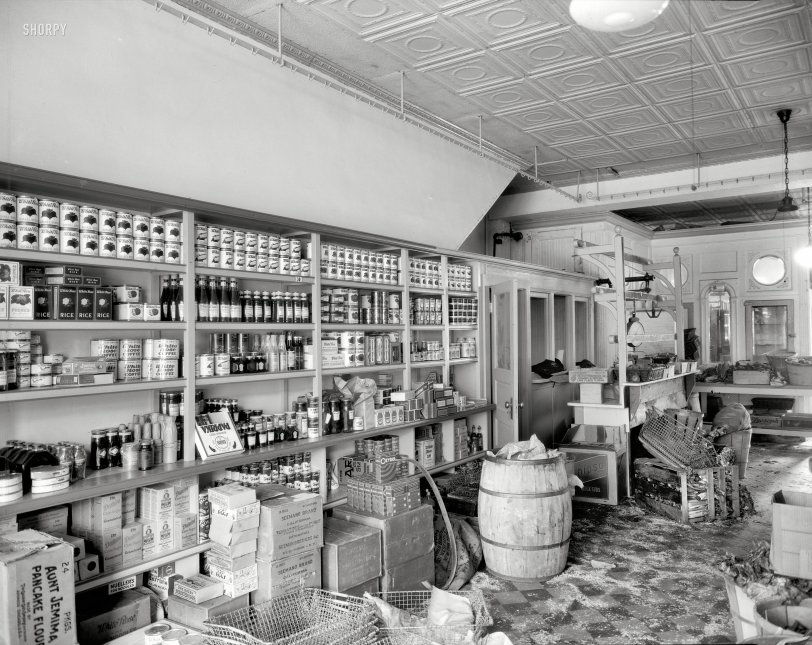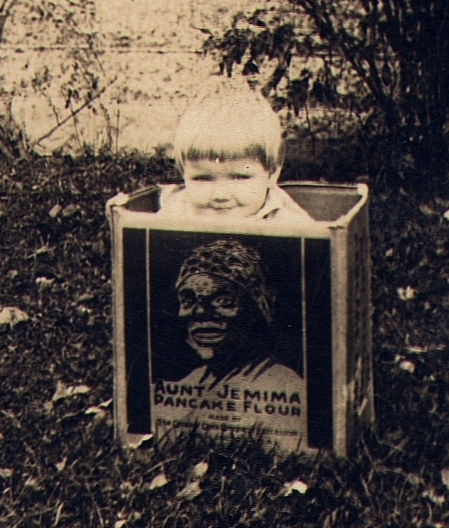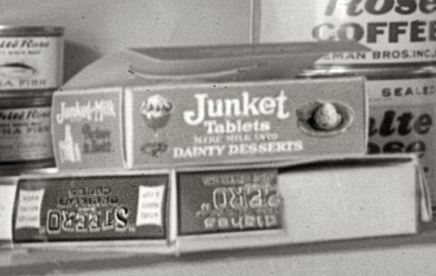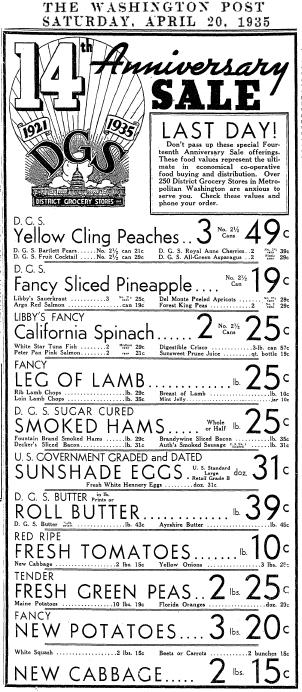


Framed or unframed, desk size to sofa size, printed by us in Arizona and Alabama since 2007. Explore now.
Shorpy is funded by you. Patreon contributors get an ad-free experience.
Learn more.

- Indiana Harbor Belt abides
- Freezing haze
- Corrections (for those who care)
- C&NW at Nelson
- Fallen Flags
- A dangerous job made worse
- Water Stop
- Passenger trains have right of way over freights?
- Coal
- Never ceases to amaze me.
- Still chuggin' (in model form)
- Great shot
- Westerly Breeze
- For the men, a trapeze
- Tickled
- Sense of loneliness ...
- 2 cents
- Charm City
- What an Outrage
- Brighton Park
- Catenary Supports
- Just a Little Before I was Born
- Afternoon normal
- The Flat Iron Cafe survives
- Aging in Place
- Raise your hand
- Good and Bad
- Oh, the 70's
- Nooooooi
- The aluminum tubing
Print Emporium
D.G.S.: 1935

Washington, D.C., circa 1935. "Food supplies, interior of D.G.S. store." One of several District Grocery Stores in the capital; there's a P Street address on the burlap sack. The White Rose brand seems especially well represented on these shelves. 8x10 acetate negative, National Photo Company. View full size.
Here's the Junket, but Where's the Beef?
Junket was (and still is) a common way to use slightly curdled milk to make custards; and it's also used by cheesemakers. My mother used it whenever the milk was just about to go bad. Growing up in the Great Depression, anything that could be done to salvage food items was considered priceless. As for Steero bouillon cubes (later Herb-Ox?), they were used for flavoring soups and stews whenever actual meat was scarce/unavailable. Also, the broth was considered an early form of "comfort food". During WWII, my father and uncles received jars of Bovril, the U.K. equivalent of Steero in their Red Cross packages. It got traded amongst the men, almost as much as cigarettes and coffee.
Hodgepodge
It's interesting the mix of products on the shelves; no grouping of veggies in one area and soups in another and sauces in yet another. Were prices for the items placed in those holders along the edge of the shelves?
Wire baskets on wheels?
Shopping carts? In Oklahoma today they are called buggies.
Celery gone over
Looks like the celery has started to rot and the store manager is mad about it!
Aunt Jemima
Why would some boxes have Jemima's picture, and not others? Another great mystery. Anyway, this youngster knows what to do with the box. Born in 1927, she has achieved fame and fortune as my Aunt Libby. Taken over-at-the-house-on-the-hill in Hamlin, West Virginia.
[The box in your adorable pic is a jumbo size container of pancake flour. The one in our photo holds 24 small boxes, each with Aunt J's picture on it. - Dave]

Re: Sawdust
50+ years ago I worked in supermarket meat markets. Sawdust was put on the floor to prevent slipping. It was spread about an inch thick. At the end of the week it was swept up, the floor cleaned as necessary, and new sawdust put down. In general, health regulations today prohibit using sawdust.
More sawdust
Here, it might have been used to add flavor and palatability to some grungy looking celery.
District Grocery Stores
DGS was a buying consortium of small independently owned groceries in the Washington area. They were a bit more expensive than the larger chain stores (A&P, Sanitary - later Safeway, etc). However, you could phone in your grocery order and it would be delivered within a hour or so.
Junket!
I haven't thought of Junket in decades. My grandmother made it for my sisters and I all the time when we were below the age of 8, but it came in packets, not tablets. It made something akin to a blancmage, although I don't think you could ever have a Junket win Wimbledon.
I believe you can still find it if you're lucky.
Junket Tablets
Make milk into DAINTY DESSERTS. Resting atop a box of Steero bouillon cubes.

Before there were supermarkets
This photo is representative of one of my favorite subjects: the old-time Ma and Pa stores. In it, you can see the evolution of retailing, product packaging, and brand name history.
This reminds me of the corner neighborhood stores in Baltimore. The blocks of rowhouses were frequently punctuated with such corner stores. In my neighborhood, in a two block area, the four corners had a butcher shop, a grocery, a bakery, and a drugstore/soda counter. These existed into the early 1960s.
Of course, today's supermarkets are a cleaner, superior shopping experience, but a certain flavor has been lost - can you remember the smell of a real bakery shop?
Key in the door
I love the fact that the key to the door is tied to the doorknob with a piece of string. Hard to misplace that way. Must have been lost previously so someone "fixed" that.
One of the original house brands
White Rose "house brand" products have been around for more than a century, and the company is still around: http://www.whiterose.com/history.asp
Our 14th Anniversary Sale!
DGS celebrates 14 years at their over 250 stores in the Metropolitan Washington area. Just phone in your order!
(Despite the date, I doubt anyone phoned-in a birthday cake order for Der Führer.)

Hello Jell-O
Just noticed Jell-O hiding in there too. Both behind and to the right of the French's Mustard.
Tea Baggers
The White Rose Food Company is still with us. They're most popular product is White Rose Tea. Based in New Jersey, they claim to be the largest food distributor in the NYC Metro area. The 125 year old company has an interesting story, you can read it on their website, www.whiterose.com/,
White Rose
Still around. From their website:
Today, White Rose is the largest independent wholesale food distributor in the New York City metropolitan area, which in turn is the largest retail food market in the United States. White Rose Food serves supermarket chains, independent retailers and members of voluntary cooperatives, providing more than 18,000 food and nonfood products to more than 1,800 stores from Maryland to Connecticut. The highest concentration of these customers is in the five boroughs of New York City, Long Island and northern New Jersey.
Disease and pestilence
Looks like they weren't expecting a visit from the health inspector.
Seeman Brothers' Brand
Folks in New York and New Jersey will still recognize the White Rose brand. It's the independent label for the Seeman Brothers wholesale grocers, est. 1886. Their website says they still offer 18,000 items in the New York area, dominating the market. It's all based on their unique fermented White Rose Tea.
During my childhood in '50s South Florida, displaced New Yorkers flocked to New York style grocers on Miami Beach to get that tea which was as strong as coffee.
A detailed history here.
Wire Baskets in this Store
During the same decade, in Oklahoma City, an inventor put wheels on some wire baskets and called them shopping carts.
How terrific this is
to see all of those oldtime products on the grocery shelf! Representative packages or cans of just about all of these items might have been found on my mother's pantry shelves back in 1940. It's especially neat to see that box of Oxydol ("Oxydol's Own Ma Perkins") but where is a box of either Rinso or Super Suds? ("Rinso White, Rinso Bright, Happy Little Washday Song", and "Super Suds, Super Suds, Lots More Suds with Super Suh-uh-uds").
[There is a big box of Chipso here. - Dave]
Bug juice
Anybody else have a family history of calling Lea & Perrins "bug juice"? Also, re: sawdust in butcher shops: aid in absorbing fluids you didn't want to think about.
Lea & Perrins Worcestershire Sauce
That packaging has hardly changed an iota in all these years.
Sawdust Memories
My father worked in butcher shops when I was young and there was always sawdust on the floor. I guess that made it easier to clean up or something.
Still familiar names
Mueller's
Aunt Jemima
French's
Campbell's
Domino
Kraft
Lea & Perrins
Wheatena
Oxydol
























On Shorpy:
Today’s Top 5